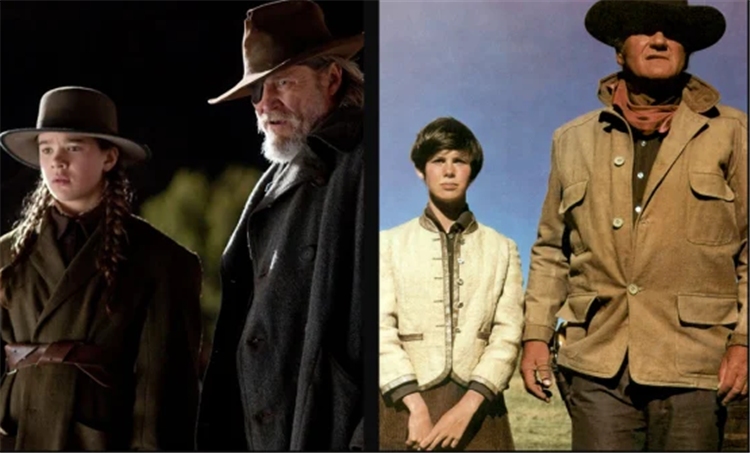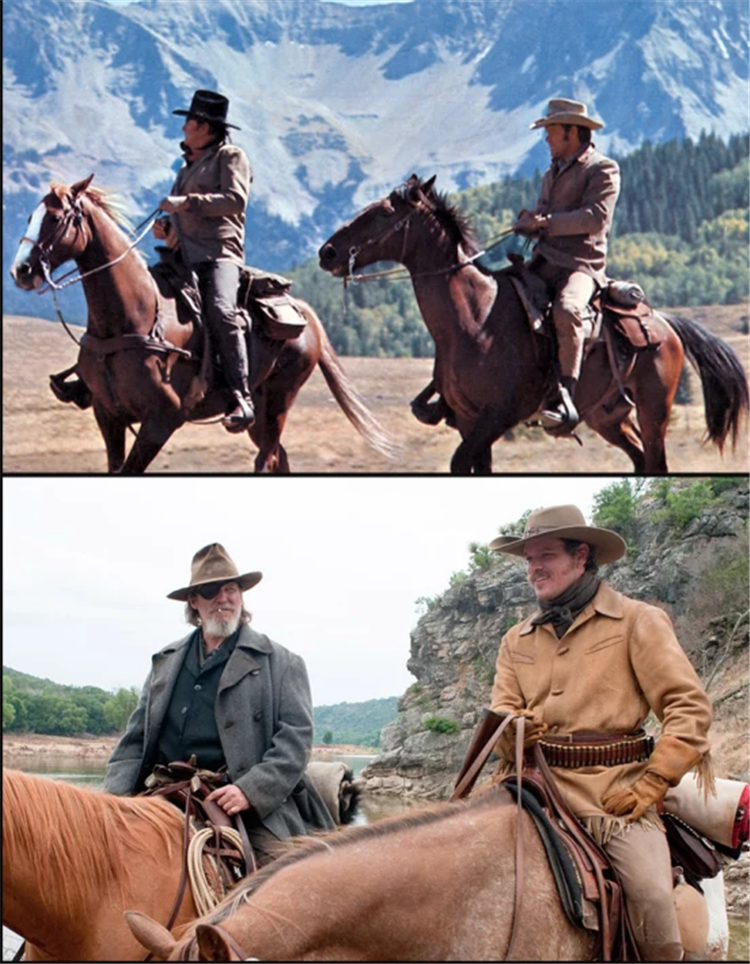The two versions of “True Grit” are like Athens, Greece, and Athens, Georgia: They’ve got the same name, but they’re in totally different worlds.
Yet for all their differences, both Westerns found plenty of fans and got plenty of Oscar attention. John Wayne was named Best Actor for the 1969 original, and the 2010 remake, directed by the Coen brothers, competes for 10 Oscars on Feb. 27, including Best Picture and Best Director.
So which movie is better? Take a look at these comparisons and decide which version you think is the truest … and the grittiest.
Rooster Cogburn (The U.S. Marshall)
1969: In Charles Portis’ 1968 Wild West novel, Rooster Cogburn is a one-eyed, overweight lawman who ain’t takin’ any guff. In the 1969 film, he’s John Wayne. Always more of an icon than an actor, Wayne uses his drawl and his swagger to make Rooster a classic movie cowboy. When we meet him, he’s hauling bad guys to jail, and in the last scene, he jumps his horse over a fence and rides into the sunset. He might be an ornery old cuss, but in Wayne’s hands, Rooster Cogburn is an American hero.
2010: When the Coens introduce Rooster in the new movie, he’s locked in an outhouse, shouting that he wants to be left alone. For the rest of the movie, he’s always caught with his pants down, stumbling into dangerous situations and somehow shooting himself out of them. But thanks to strong writing and a gruffly sweet performance by Jeff Bridges, Rooster is more than a joke. He’s part of an outlaw world that’s disappearing. Sometimes, that makes him a fool, and sometimes, it makes him a lost soul with a bruised heart.
Advantage: 1969. Bridges is the better actor, and he’s working with a better script, but he can’t overshadow one of the Duke’s most iconic roles.
The violence
1969: Not to sound prudish, but this movie’s awfully violent for something you’d see on TCM. There are severed fingers flying, punches getting thrown, and one darkly funny scene where John Wayne threatens to make a scofflaw eat turkey feathers. But that said, there’s not a lot of gore. The film’s violence isn’t supposed to seem real. It’s supposed to make this yarn more exciting.
2010: The Coens use a similar approach. We see the aftermath of fighting — a bullet hole in a jacket, blood spatter on a beard — but when it comes to the actual fight, the camera pulls away, letting the movie focus on story and character instead of brutality. There is one exception, though. Mattie goes to a hanging in both films, and in the first, we only see the prisoners standing with hoods on their heads. In the new version, we see their faces first. We hear them pleading or cursing or singing before they die. Knowing the men, even a little, adds the sting of reality to their punishment.
Advantage: Draw. Both movies do a great job of using violence to forward the mood of the story.
Mattie Ross (The girl)
1969: Mattie Ross may be just 14, but after a lout named Tom Chaney kills her father, she wants vengeance. She hires Rooster to track Chaney down and has the nerve to join him, but in the 1969 movie, she also sneaks away to cry.

Kim Darby’s terrified eyes say that for all her sass, Mattie’s a little girl. When she retrieves her daddy’s things, she cradles his pocket watch and weeps. We’re reminded how vulnerable she is.
2010: The new Mattie looks at her father’s watch, but she grabs his gun instead. In an Oscar-nominated performance, Hailee Steinfeld makes the character a no-nonsense kid who can outsmart adults and tame wild horses. The Coens clearly believe in her: Just like the book, Mattie narrates the film, and we learn to see the characters through her eyes. You get the impression that if this Mattie met the original, she’d pop her in the mouth.

